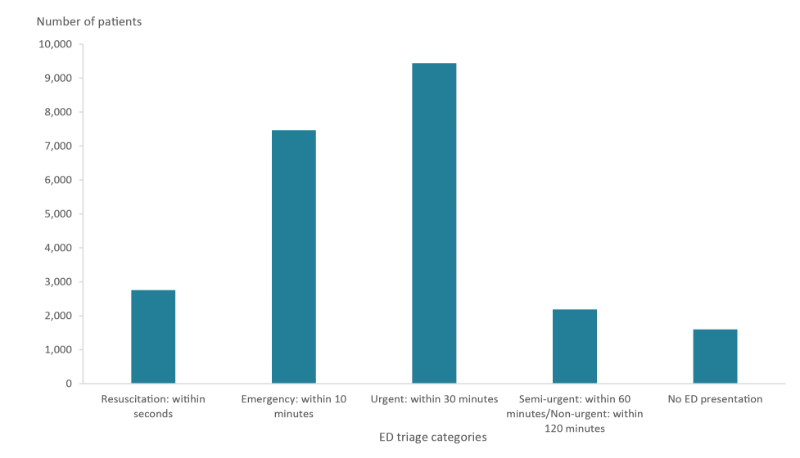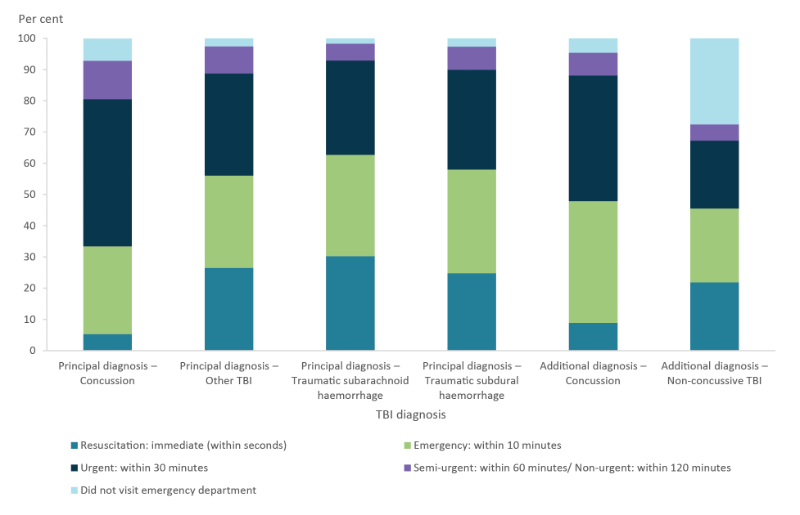Admission information
Urgency of admission
Overall, 96% of patients in the cohort were admitted as emergency cases. Emergency admissions are those where it is deemed that the patient requires admission within 24 hours, as opposed to non-emergency admissions such as elective (planned) admissions and cases where urgency category was not stated.
ED presentations that resulted in the initial TBI hospitalisation
The linking of emergency department and hospitalisations data in the NIHSI AA enables insights such as which triage categories patients were assigned in ED and diagnosis information. Although the NNAPEDCD collects principal and additional diagnosis information, when compared with the diagnosis information in the NHMD hospitalisation records, there was a substantial undercount of TBI diagnoses in the ED data for one jurisdiction. Therefore, the NNAPEDCD diagnosis data was not used in the analysis.
Looking at which triage categories patients were assigned to gives an advised time frame within which the patient should receive medical care, based on an initial assessment by a nurse or medical practitioner (Figure 4; Table S2).
Figure 4: Number of cohort patients by ED triage category

Source: AIHW NIHSI AA v0.5.
Triage categorisation varied by TBI diagnosis (Figure 5; Table S2).
There were 21,800 (93%) patients in the TBI cohort whose initial TBI hospitalisation was on the same day or the day after an ED presentation. This means an ED presentation led to the initial TBI hospitalisation for almost all of the patients in the cohort.
Most patients (77%) in the TBI cohort were assigned to the emergency and urgent triage categories. Thirteen per cent of the cohort needed immediate resuscitative care on arrival at triage.
Figure 5: Percentage of cohort patients by ED triage category and TBI diagnosis

Source: AIHW NIHSI AA v0.5.


